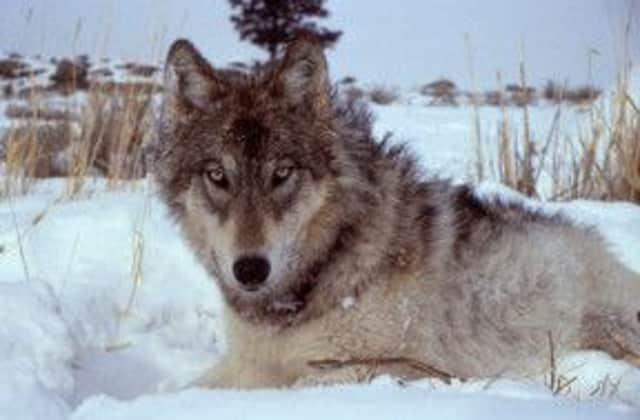Jonathan Hughes: Nature is good for business


Something unexpected is happening in the world of big business. Corporate giants such as Unilever, Puma, SABMiller and the Coca-Cola Company are beginning to understand, and even embrace, nature conservation. And they are doing so because it’s good for business.
This trend will be explored at the inaugural World Forum on Natural Capital, taking place in Edinburgh this month. The global conference will bring together business leaders, environmentalists and government representatives to debate “natural capital”, defined as the world’s stocks of natural assets including geology, soil, air, water and all living things.
Advertisement
Hide AdAdvertisement
Hide AdEnvironmentalism in the 20th century was characterised by two main responses to humanity’s growing impact on the natural world. First was protection of endangered species. Second was the creation of national parks and nature reserves. These two “pillars” led to many notable successes, from the return of the once critically endangered otter to every county in the United Kingdom, to the establishment of world-famous national parks such as Yellowstone, the Great Barrier Reef and the Serengeti.
Yet despite protected areas now covering 13 per cent of the world’s land surface, extinction rates are over one thousand times the normal background rate, and one quarter of all plants are threatened with extinction – the same plants we rely on for our medicines, food and other raw materials. The response by conservation professionals in the 21st century has been to build a third pillar: the ecosystems pillar. If we succeed, it might just mean we can accommodate nine billion people on Earth sustainably by the year 2050.
But why the growing interest from big business in nature conservation? One thing that has changed is that governments and companies are getting serious about quantifying the value of nature’s stocks (natural capital) and nature’s flows (ecosystem services) in a way never attempted in the past. By valuing natural capital in a similar way to financial, manufactured, social and human capital, we can make decisions on the management of our environment based not just on the vitally important moral case for saving nature, but also on hard-nosed economics.
Not all environmental campaigners are comfortable with this approach. Opponents suggest it could lead to the “commodification of nature” and fear natural resources could be sold to the highest bidder. They argue the intrinsic value of nature must take precedence and a price cannot be placed on the priceless.
As true as this argument may be, it has singularly failed to halt the loss, mismanagement and indeed the sale of natural capital. Yet even amongst traditionalists there is now broad acceptance that as long as the value of nature remains invisible in economic decision-making, we will simply continue to generate financial profits through running up a massive environmental overdraft. There are parallels with the bursting of the debt bubble here. Globally, we underestimated, or ignored, the risk of bad financial debt and, aside from a few enlightened states and businesses, we are currently largely ignoring the risk of runaway natural capital debt.
Early adopters in natural capital accounting include the sports lifestyle company Puma, which calculated an impact of €51 million resulting from land use, air pollution and waste along the value chain, which when added to a previously calculated €94m for carbon emissions and water consumption amounts to €145m worth of unaccounted-for environmental externalities every year. It was both brave and smart of Puma to undertake this work. Brave because it is one of the first, and now has a huge challenge to bring that figure down to as close to zero as possible. Smart because it now has invaluable data to enable informed risk planning and corporate strategy development.
At the government level, countries around the world are developing or considering legislation on natural capital, including Botswana, Costa Rica, Colombia, Georgia, Germany, Peru, Philippines and the United Kingdom, all of whom met early this year at the Bundestag in Berlin to share ideas on natural capital accounting in the public sector. The coalition government has set up a high-level natural capital committee to look at where, when and how natural assets are being used unsustainably.
For the corporate world, natural capital accounting is part of what might be called second-generation corporate social responsibility – a move from simply publishing good-news case studies in the annual report towards a more systematic appraisal of the whole business and its impact on social and environmental systems.
Advertisement
Hide AdAdvertisement
Hide AdWhy, for example, continue to source a raw material such as cotton or rubber from an agricultural ecosystem where soil is eroding and aquifers are drying up when there are sustainably managed ecosystems in other parts of the world as alternatives? The simplistic answer might be that it is cheaper. Financially, in the short term this may sometimes be the case, but in the medium to long term the risk of ecosystem collapse, and subsequent supply insecurity and price volatility, could have profound effects on the bottom line. Hence the interest in natural capital from enlightened CEOs who are beginning to realise that working with, not against, nature ultimately makes good business sense.
• Jonathan Hughes is conservation director at Scottish Wildlife Trust and programme director for the World Forum on Natural Capital taking place on 21-22 November in Edinburgh, www.naturalcapitalforum.com